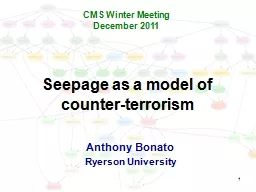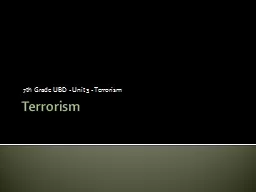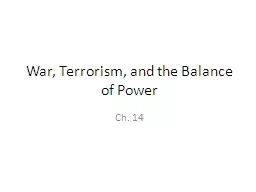PPT-1 Seepage as a model of counter-terrorism
Author : min-jolicoeur | Published Date : 2016-07-10
Anthony Bonato Ryerson University CMS Winter Meeting December 2011 Good guys vs bad guys games in graphs 2 slow medium fast helicopter slow traps tandemwin medium
Presentation Embed Code
Download Presentation
Download Presentation The PPT/PDF document "1 Seepage as a model of counter-terroris..." is the property of its rightful owner. Permission is granted to download and print the materials on this website for personal, non-commercial use only, and to display it on your personal computer provided you do not modify the materials and that you retain all copyright notices contained in the materials. By downloading content from our website, you accept the terms of this agreement.
1 Seepage as a model of counter-terrorism: Transcript
Download Rules Of Document
"1 Seepage as a model of counter-terrorism"The content belongs to its owner. You may download and print it for personal use, without modification, and keep all copyright notices. By downloading, you agree to these terms.
Related Documents














